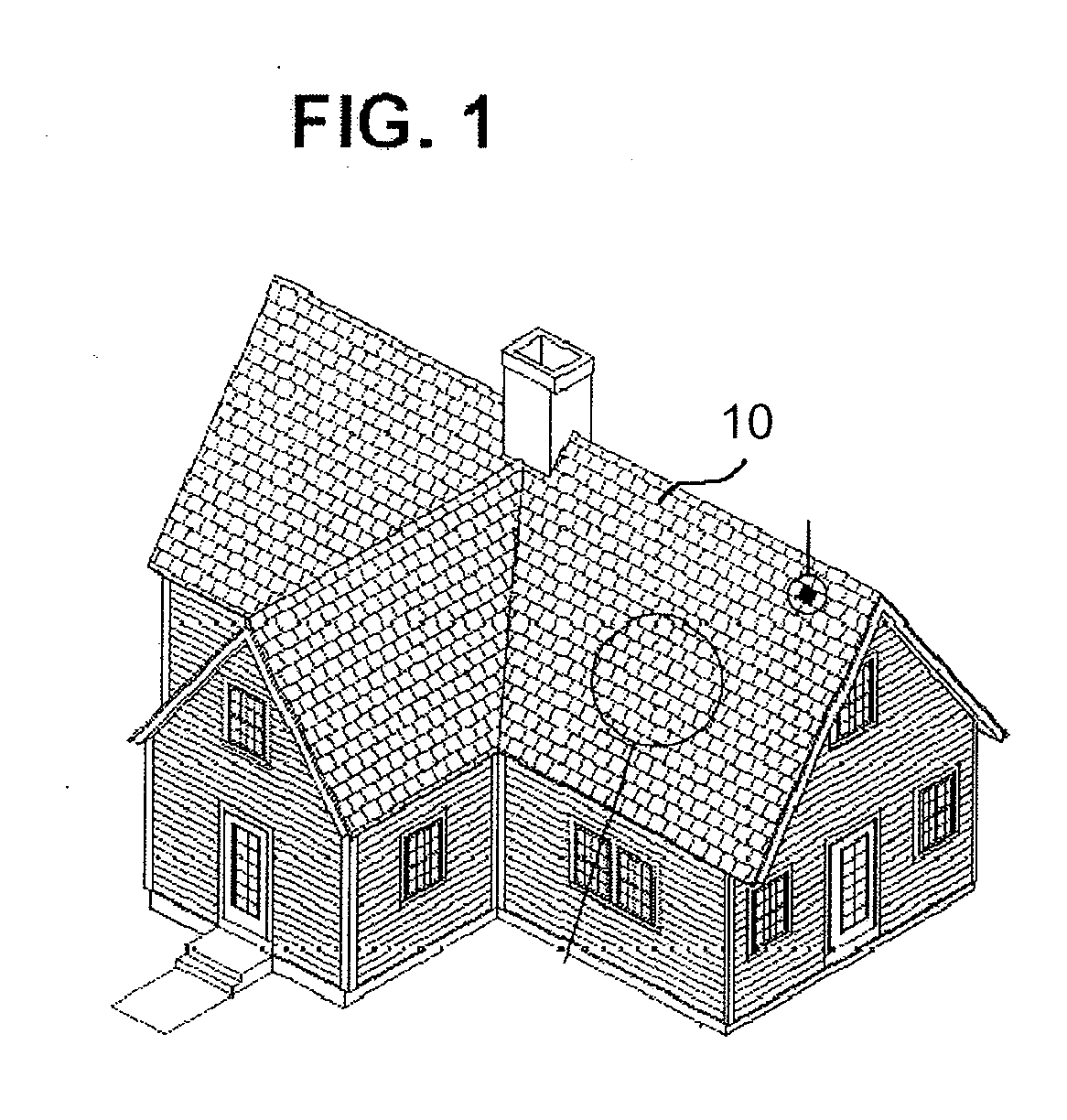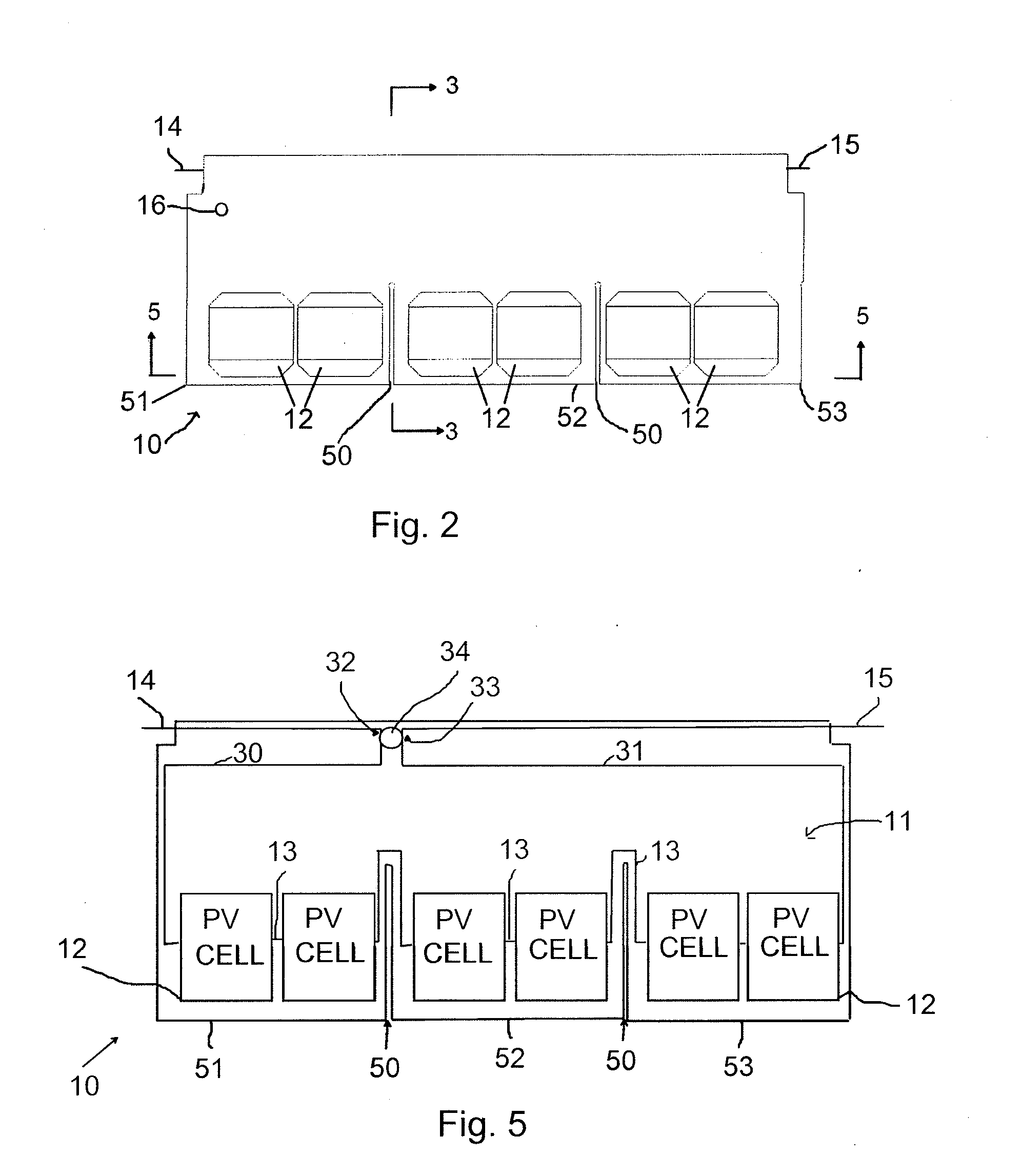Photovoltaic Shingle
a photovoltaic and shingle technology, applied in the field of photovoltaic modules, can solve the problems of heavy conventional photovoltaic panels, unaesthetically pleasing photovoltaic panels, and inconvenient viewing
- Summary
- Abstract
- Description
- Claims
- Application Information
AI Technical Summary
Benefits of technology
Problems solved by technology
Method used
Image
Examples
Embodiment Construction
[0022]The present photovoltaic cell will now be described with reference to the drawings. FIG. 1 shows a exemplary structure which has a roof covered with photovoltaic shingles 10. As will be discussed further below, the shingles 10 include an integrated photovoltaic module. The individual photovoltaic shingles are connected together to form an array of photovoltaic shingles which, when installed, mimic the look of conventional shingles.
[0023]Solar energy is collected by encapsulated photovoltaic cells in the photovoltaic shingles 10 and converted into direct electric current (“DC current”). The photovoltaic cells are connected together on a single, three, or six, tab shingle to combine the solar energy delivered to the exposed surface of the shingle. The DC current is transferred to a junction by two electrical wires. In the junction, these wires are further sealed and insulated through encapsulation and connected to two output electrical wires. The output electrical wires are conn...
PUM
 Login to View More
Login to View More Abstract
Description
Claims
Application Information
 Login to View More
Login to View More - R&D
- Intellectual Property
- Life Sciences
- Materials
- Tech Scout
- Unparalleled Data Quality
- Higher Quality Content
- 60% Fewer Hallucinations
Browse by: Latest US Patents, China's latest patents, Technical Efficacy Thesaurus, Application Domain, Technology Topic, Popular Technical Reports.
© 2025 PatSnap. All rights reserved.Legal|Privacy policy|Modern Slavery Act Transparency Statement|Sitemap|About US| Contact US: help@patsnap.com



